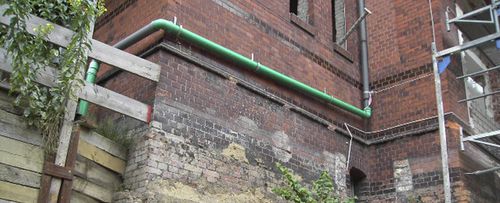
Foam resin grouting WEBAC® 2260, WEBAC® B60for masonry restoration



Add to favorites
Compare this product
Characteristics
- Type
- foam resin
- Function
- for masonry restoration
Description
WEBAC® 2260 is a PU rigid foam for filling cavities/voids and thermal insulation.
Range of Application
Filling and sealing of cavities/voids and solidification in masonry structures
Sealing of pipe ducts
Filling of hollow bricks (e.g. poroton)
Repair of floating structures (pontoons)
Properties
Mixing ratio 1 : 1
Pressure resistant rigid foam, also cures without water
Thermal insulation effect
Chlorine- and CFC-free
Excellent adhesion
Slow expansion
Adjustable reaction time (accelerator WEBAC® B60)
Application
Casting
Injection by 2C pump
WEBAC® 2260: casting foam resin for void filling
The void filler WEBAC® 2260 is a high quality, sand colored PU cast material. After mixing both components, it slowly expands and cures to form a rigid yet not brittle foam of high compressive strength. A finely pored, closed hydrophobic structure forms during the curing process and the product cures without shrinking. Without any counter-pressure, i.e. given atmospheric pressure, the material increases its volume up to 4 times.
WEBAC® 2260 also provides for good thermal insulation
WEBAC® 2260 is a void filler of high compressive strength suitable for the rigid filling of cavities, gaps and spaces which is characterized by its excellent adhesion. It is suitable for dry and damp, absorptive and non-absorptive substrates. The void filler is e.g. used for filling cavities in two-shell masonry, in spaces between metal and mineral substrates and in wooden constructions. WEBAC® 2260 is also suitable for filling wall openings. This void filler provides for watertightness and good thermal insulation.
Catalogs
*Prices are pre-tax. They exclude delivery charges and customs duties and do not include additional charges for installation or activation options. Prices are indicative only and may vary by country, with changes to the cost of raw materials and exchange rates.


